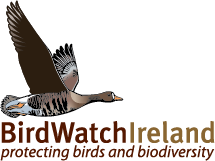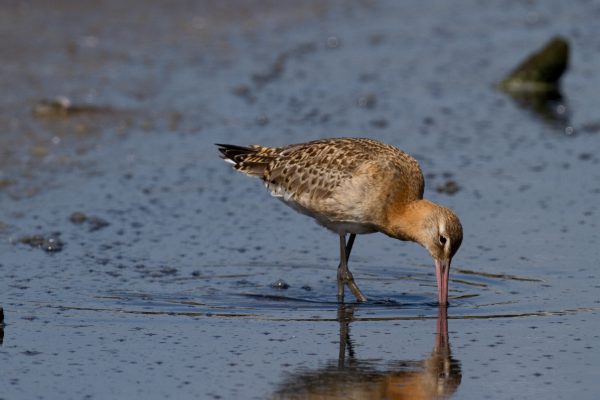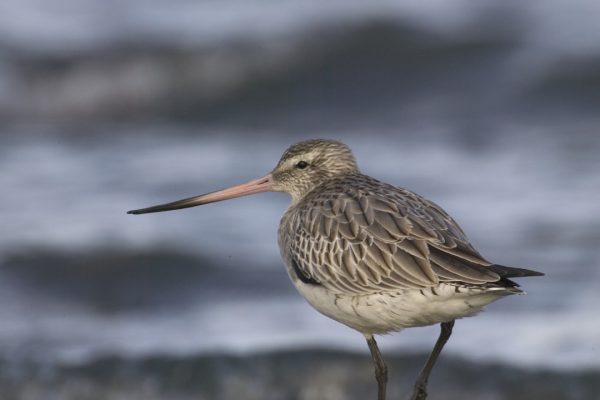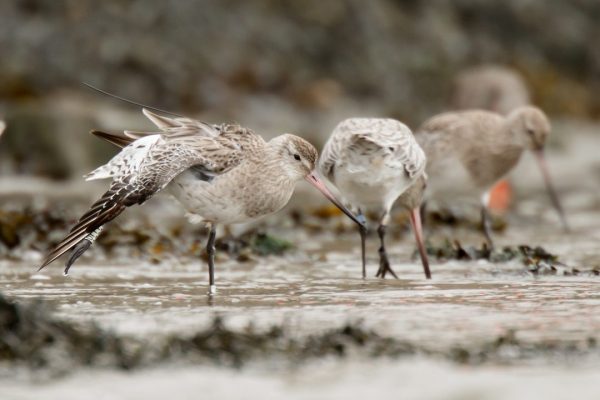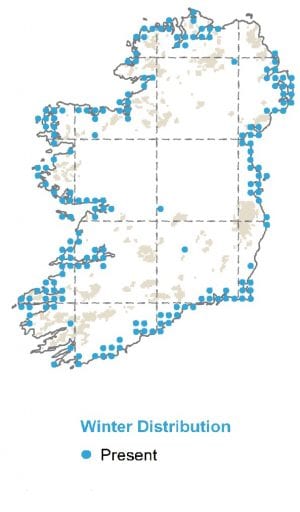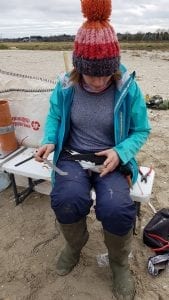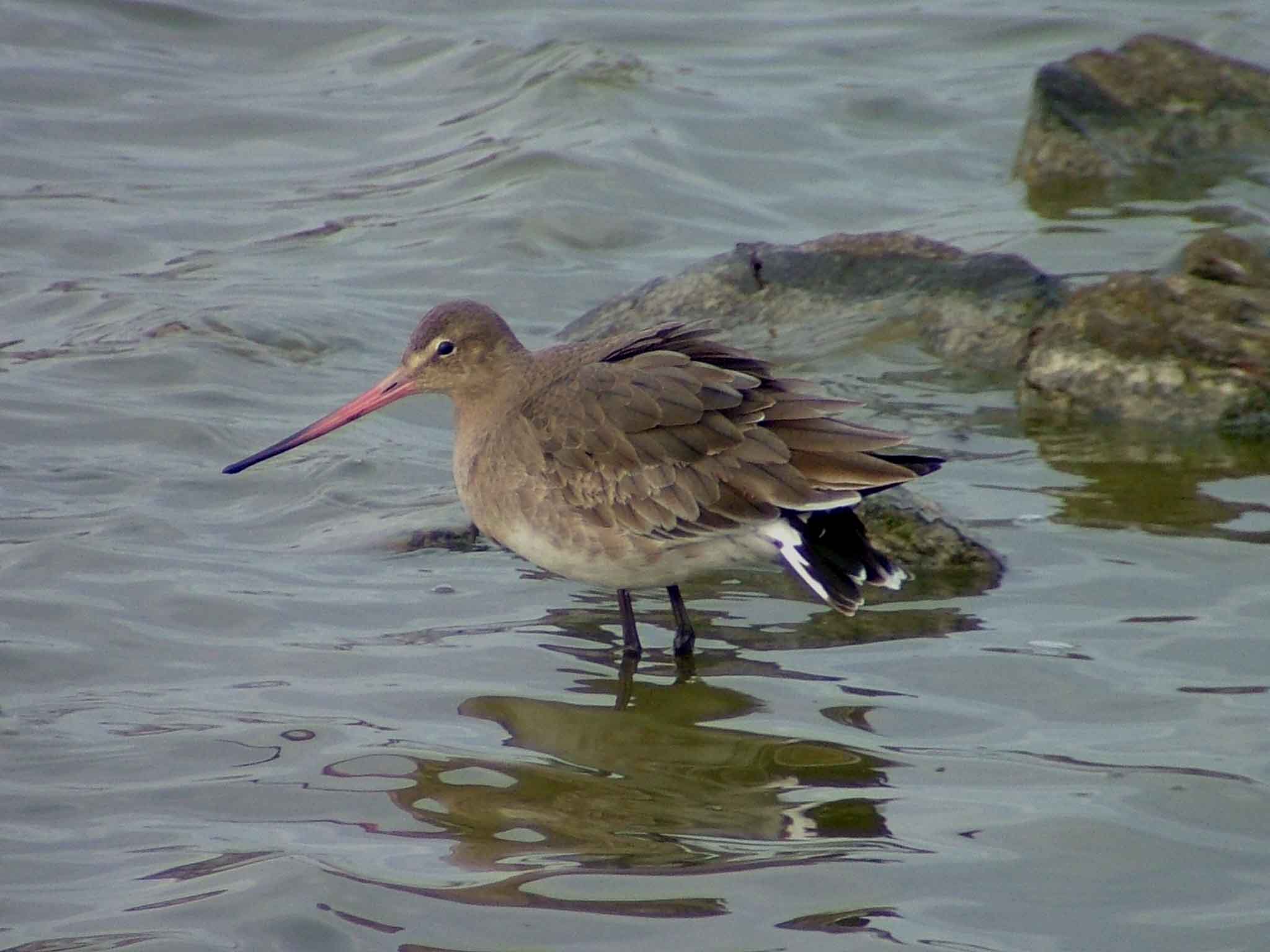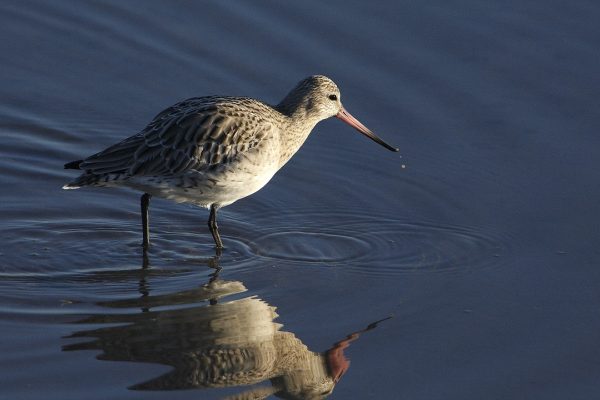
Bar-tailed Godwit
| Irish Name: | Guilbneach stríocearrach |
| Scientific name: | Limosa lapponica |
| Bird Family: | Waders |
red
Conservation status
Conservation status
Status
Winter visitor to coastal estuaries from October to April from Russia and Scandinavia.
Identification
At first glance resembles a smaller version of a Curlew - similar shape (long legs and neck) and plumage (grey/brown with streaking). The long, straight and slightly upturned bill, however is quite different. Summer plumaged birds occur sometimes, showing varying amounts of orange/brick red on the body feathers. Bar-tailed can easily be confused with the slightly longer-legged and more elegant Black-tailed Godwit, however in flight, Bar-tailed always shows fairly uniform, grey brown upperwings, a long white rump and a finely barred tail (Black-tailed is strongly patterned with black and white wings and tail and a square white rump). Usually seen feeding along outer shoreline of estuaries. Sometimes in large flocks.
Voice
Harsh/nasal two note 'cewee-cewee'
Diet
Feed along the tidal edge, or in shallow water (up to 15 cm depth). They usually commence feeding on an ebbing tide, and feed continuously for up to 6 hours. Polychaete worms, particularly lugworms, form a large proportion of their diet. On the muddier estuaries, where lugworms may be absent, they take ragworms and bivalves.
Breeding
Breeds in northern Norway, Finland and further to the north and east.
Wintering
Wintering distribution entirely coastal. They are largely confined to estuaries, with largest numbers recorded on sandy estuaries. Small numbers recorded using non-estuarine coastline.
Monitored by
Blog posts about this bird
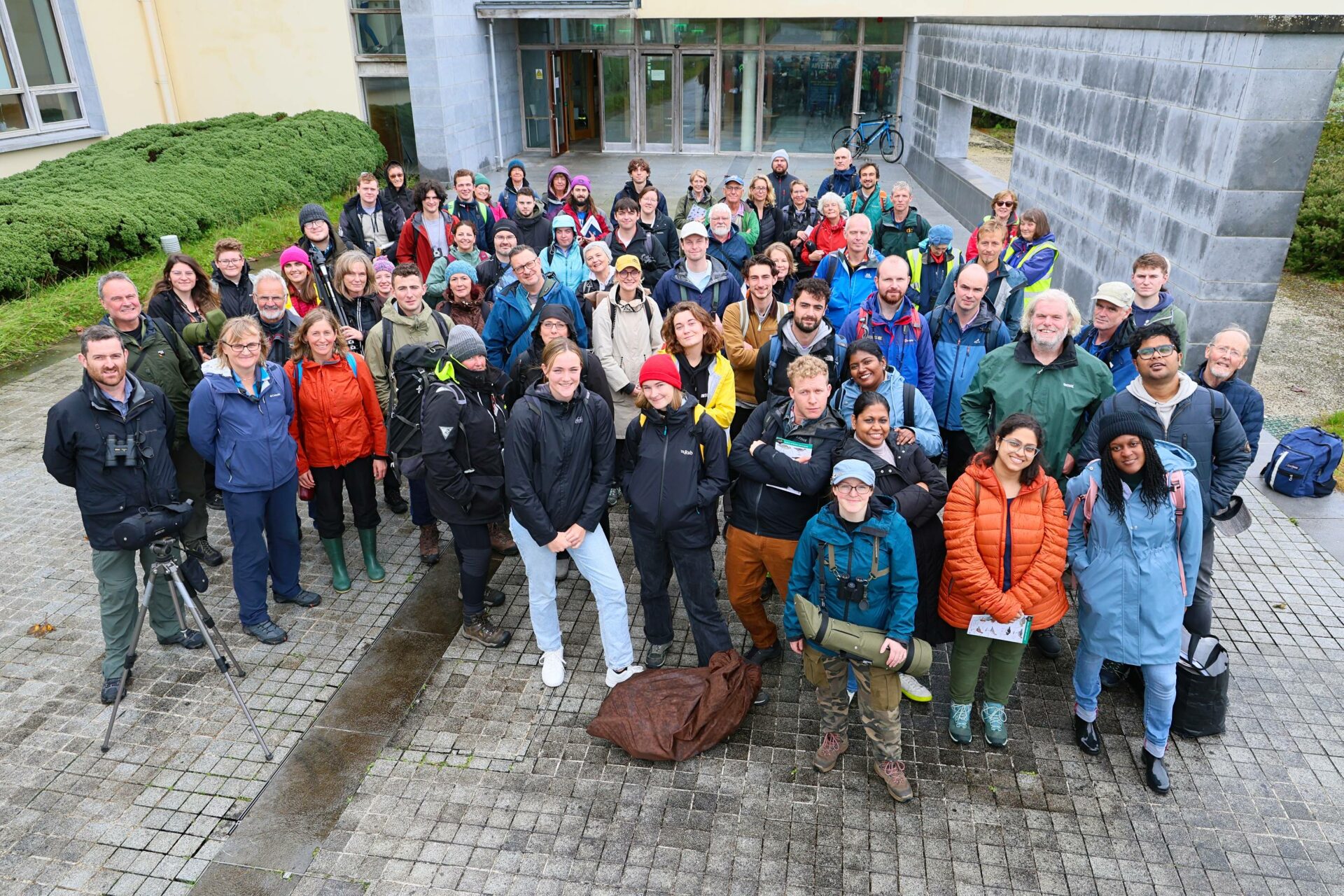
Record attendance at I-WeBS workshops highlights public appetite to support biodiversity
The high attendance at two recent introductory Irish Wetland Bird Survey (I-WeBS) workshops in Galway highlighted an increasing public desire to learn about and support biodiversity.
Organised by BirdWatch Ireland in collaboration with Galway County Council and Galway City Council with the support of the NPWS, the workshops were aimed at showing birdwatchers how they can help monitor wintering waterbird populations at Inner Galway Bay and in turn, inform their conservation. Additionally, BirdWatch Ireland also hoped to recruit new skilled I-WeBS observers to survey this important site during the 2023/ 24 season.
Over 120 people attended the workshops across the two days. The training days, which involved a combination of informative talks about the I-WeBS survey followed by an outdoor field method demonstration, were held on the 23rd September at Knocknacarra Community Centre and the 6th of October the Marine Institute. Within the talks, attendees found out about why it is so important to survey our wintering waterbirds as well as some hot tips for identifying and counting waterbirds. To pick up some tips and tricks for identifying waterbirds, take a look at the I-WeBS training tools.


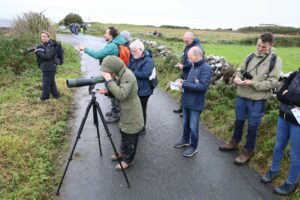
Workshop participants getting a glimpse of some interesting waterbirds at Rinville.
The outdoor portion of the events – which took place at Rusheen Bay and Rinville – proved fruitful, offering views of waterbirds such as Lapwing, Curlew, Turnstone and Sandwich Terns, to name but a few. Although not a waterbird, the sight of a beautiful female Wheatear hopping along the nearby rocks was a delightful bonus. Attendees brought with them a wealth of relevant experiences, skills and interests, with a high number of local university students and ecological consultants particular taking part. The interactive and informative workshops have thus far resulted in the recruitment of 30 new I-WeBS volunteers for Inner Galway Bay, with many more attendees choosing to sign up to survey at other sites. Meanwhile, the events inspired many more to get involved with their local Galway Branch of BirdWatch Ireland. In addition to boosting survey volunteer numbers, the recent events also offered a fantastic platform to spread the word about I-WeBS – a National Parks and Wildlife Service (NPWS) funded monitoring project that has been running since 1994. Every year between September and March, close to 500 I-WeBS volunteers record wintering waterbirds at important wetland sites around the country. Irish wetlands are extremely important for the survival of these birds and I-WeBS keeps track of how these birds are faring so that informed conservation action can be taken.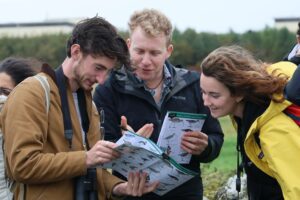
Participants working together to identify birds at Rinville.
The recent I-WeBS workshops focused predominantly on Inner Galway Bay – an internationally important site for wintering waterbirds, hosting over 20,000 birds every season. Inner Galway Bay is a site of international importance for the Great Northern Diver and Light-bellied Brent Goose, meaning that it regularly supports one per cent or more of the flyway population of these species. It is also a site of national importance for many birds, including Red-listed species such as Shoveler, Grey Plover, Dunlin, Redshank, Black-tailed Godwit, Bar-tailed Godwit and Lapwing. In all, the workshops proved to be a great success, in large part due to the strong collaboration between BirdWatch Ireland, BirdWatch Ireland’s Galway Branch, Galway County Council, Galway City Council, the Marine Institute and Knocknacarra Community Centre. BirdWatch Ireland is particularly grateful to Galway County Council and Galway City Council for funding binoculars and telescopes, which will be available for survey volunteers to rent from Galway City Library.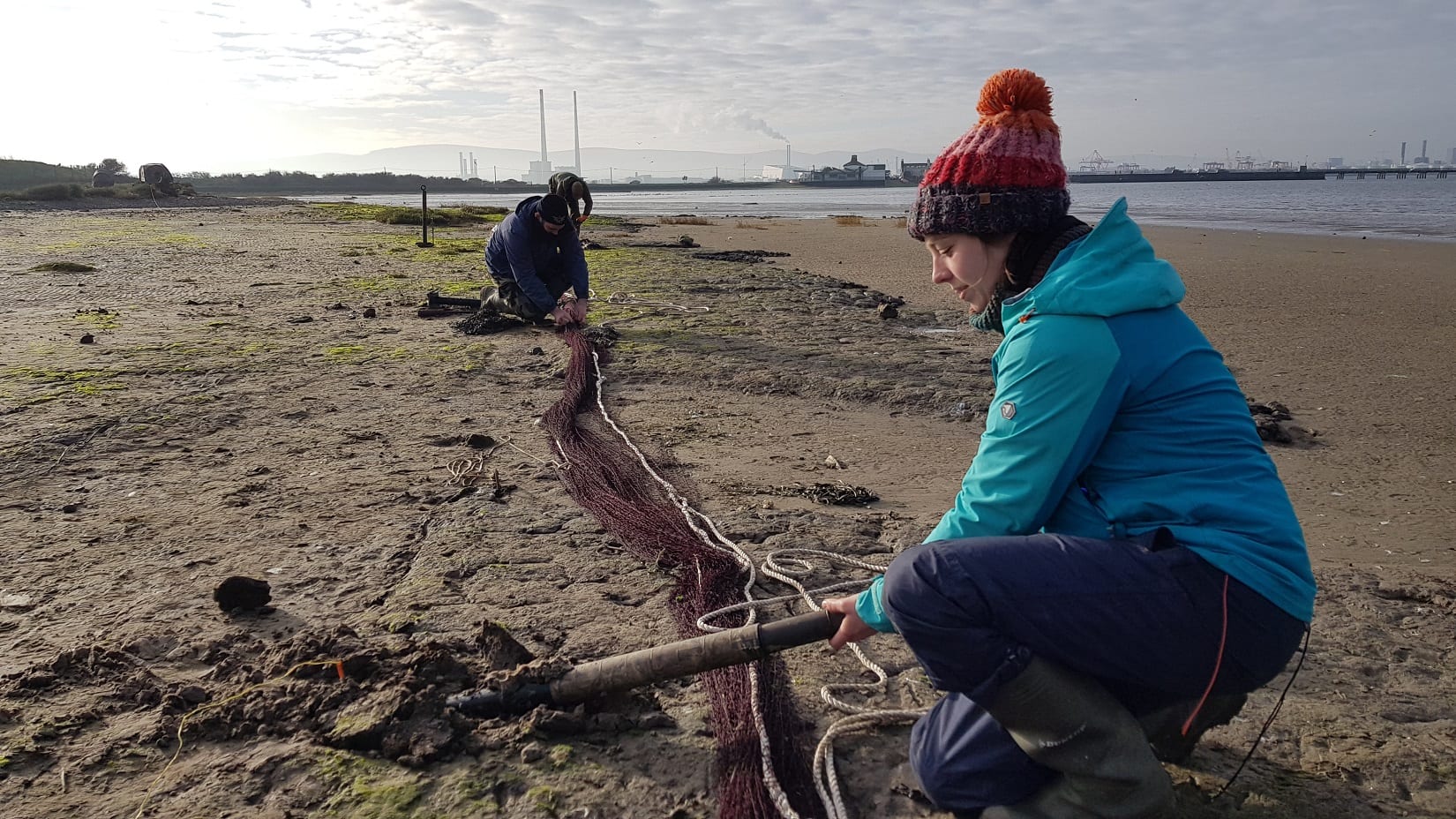
Starting 2020 with a (literal) BANG!! Catching and colour-ringing waders in Dublin Bay
In January 2020, the Dublin Bay Birds Project Team put in a huge effort to fit colour-rings (safely, and under license) to the legs of a portion of the wintering waders in Dublin Bay. Over four days and nights, we caught and ringed 235 waders of 6 species, with 23 ‘re-trapped’ birds, two of which were Icelandic-ringed Oystercatchers! The precise tally is 199 Oystercatchers, 23 Black-tailed Godwits, 5 Redshank, 4 Dunlin, 3 Curlew, and 1 Knot.


We used a highly specialised technique called ‘cannon-netting’ (firing a large net outwards using weighted projectiles propelled from cannons) to capture the birds. To do this, we 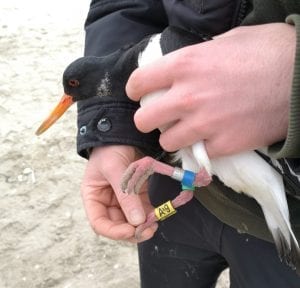
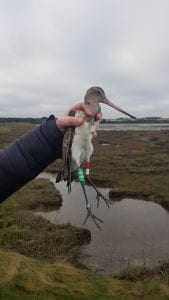
Essentially, the fitting of colour-rings to the legs of these wintering waders in Dublin and the subsequent reading and reporting of them (and similarly the fitting of small GPS-devices to birds) is 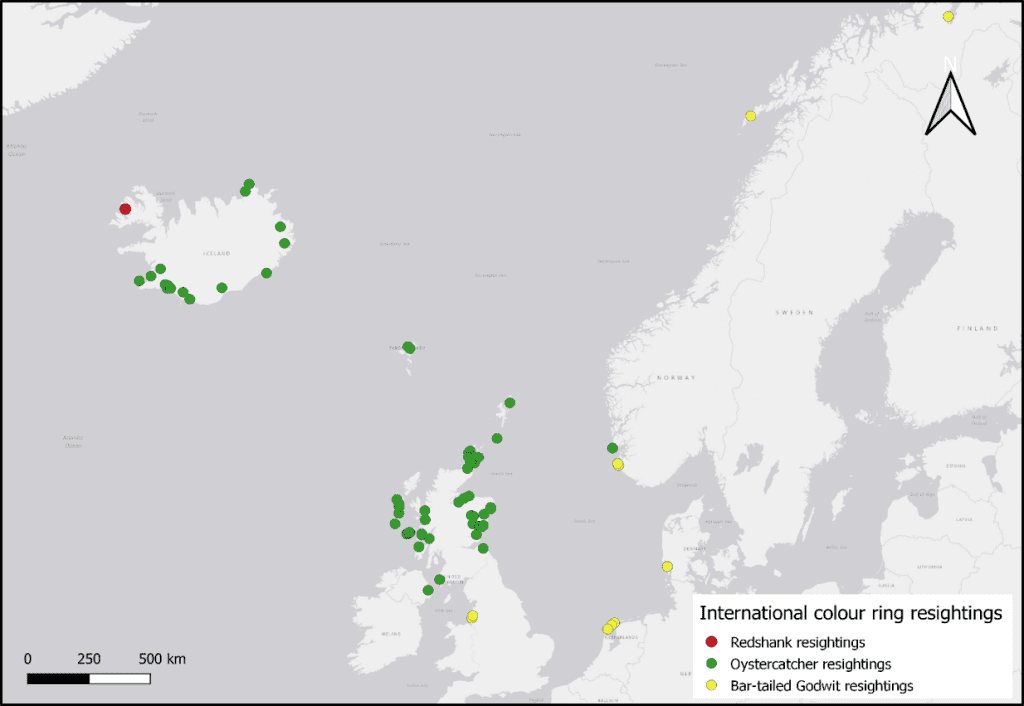
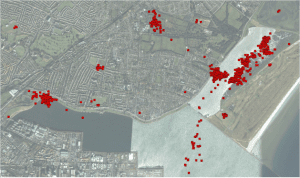
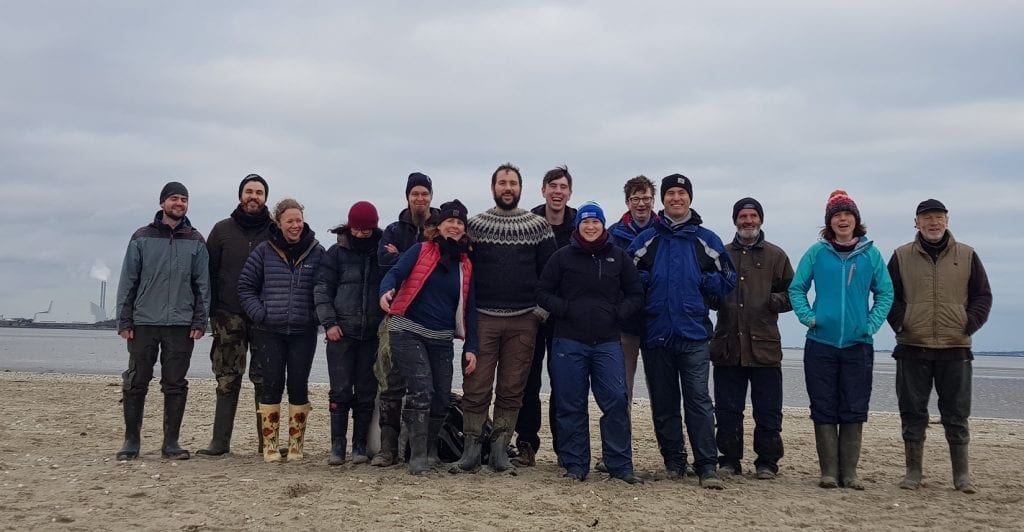
Now the work is to go out and look for all of these colour-ringed birds, read those inscriptions and submit them to us!
Submit your resightings HERE!
The Dublin Bay Birds Project is very lucky to be supported by Dublin Port Company who keenly recognise the value of this work and the data it generates.

This work was carried out under license from the National Parks and Wildlife Service and the British Trust for Ornithology.
